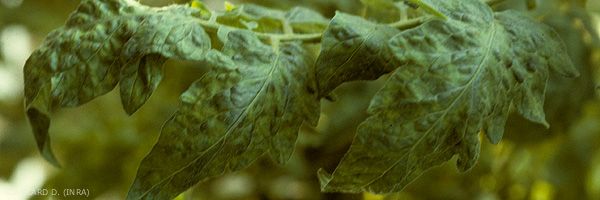
Potato virus Y
(PVY)
Potato virus Y
,
,
- classification : Potyviridae, Potyvirus
The virus Y Potato ( Potato virus Y , PVY) is probably present in all areas apple crop land worldwide . In these areas, it is also susceptible to attack tomatoes, chili peppers and tobacco. It is mainly found in the open field, but also, and more and more, in shelters. It is very serious in hot regions on tomato and pepper.
The strains of the YO group are distributed all over the world; those of the YN group (including strains of PVYNTN) are present in Europe and in the former USSR, in part of Africa including the Maghreb, in South America (Argentina, Chile ) and in Asia. YC strains are probably present in Australia, India and Europe. Although difficult to quantify, the economic losses caused by this virus can occasionally be significant.
This virus is rife in France , where mosaic (PVYO) or necrotic (PVYN) strains cause quite varied symptoms. The attacks also take place especially in the open field, but they are not uncommon in shelters. PVY is one of the main viruses in tomato crops , often in complexes, in particular with CMV.
PVY was first reported on potato in the United Kingdom, in 1931. This virus, which is the type species of Potyviruses (Figure 1), exhibits significant variability, studied in several of its hosts. The strains are commonly classified into three large groups , defined according to the symptoms induced in tobacco, Physalis floridana and potato:
- the Y group O brings together all the so-called “ordinary” or “common” strains of the Y virus. These strains, which attack tomatoes, have been known since the 1930s and are present throughout the world;
- the Y group N includes all the strains which induce a necrotic mosaic in tobacco. They also affect the tomato. These strains appeared late, in the 1940s, and are very unevenly distributed on the different continents. Currently an upsurge of this group of strains is observed in several European countries. Variants inducing annular necrosis on potato tubers have been called PVY NTN and are now widespread;
- other groups or strains have been described more occasionally, in particular the Y group C . In general, tomato and tobacco seem capable of harboring all strains of PVY, behaving as universal hosts of this virus.
 |
| Figure 1 |





